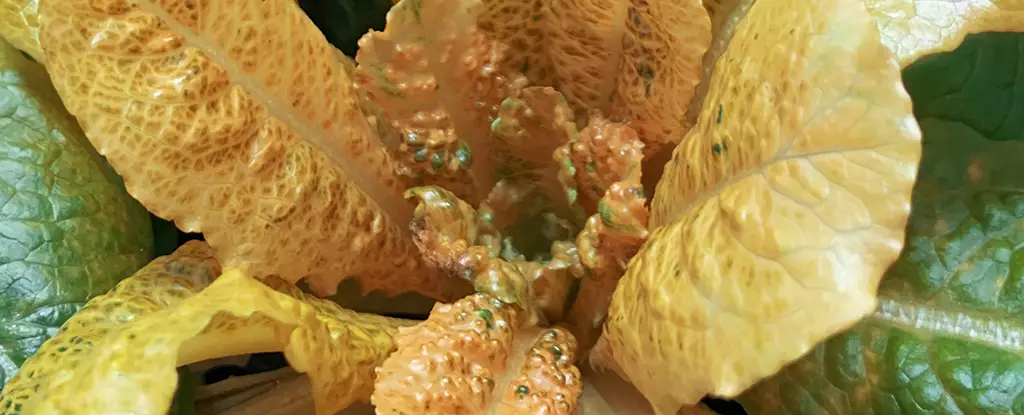In the realm of agricultural biotechnology, researchers are incessantly exploring ways to enhance the nutritional value of commonly consumed crops. A particularly noteworthy advancement is the creation of genetically modified ‘golden lettuce’, enriched with appreciably higher levels of vitamin A. This breakthrough stems from the understanding that vitamin A is pivotal for numerous biological processes, including immune regulation, vision, and growth. The potential implications of this innovation reach far beyond this single vegetable; it opens the doors for similar modifications in other crops, enhancing diets where deficiencies persist.
The research spearheaded by Valencia Polytechnic University (UPV) in Spain saw scientists employing advanced genetic engineering techniques to increase beta-carotene levels significantly within lettuce (Lactuca sativa). Beta-carotene, known for its red-orange pigment, is essential as it is converted into vitamin A in the human body. Traditional methods of agronomy would likely struggle to boost beta-carotene levels without disrupting the critical process of photosynthesis, essential for a plant’s survival.
As explained by molecular biologist Manuel Rodríguez Concepción, an excess or deficiency of beta-carotene in chloroplasts can lead to compromised photosynthetic functionality, ultimately threatening plant vitality. To navigate this challenge, the research team devised methods to create cellular compartments conducive to storing beta-carotene without negatively impacting the plant’s core functions. This ingenious approach exemplifies how innovation can progress through a combination of traditional botanical knowledge and modern genetic engineering.
The successful enhancement of beta-carotene in lettuce was not achieved through simplistic genetic tweaks alone. The scientists introduced a bacterial enzyme, crtB, which enabled the transformation of certain chloroplasts into chromoplasts. Chromoplasts serve as pigment reservoirs, allowing for the storage of substantial quantities of beta-carotene. Additionally, the utilization of high-intensity light treatments catalyzed the development of plastoglobules—fatty storage units within the leaves. Such innovative methodologies underscore the collaborative potential of biotechnology and enhanced photonic stimulation for agricultural advancements.
Luca Morelli, also hailing from UPV, further elaborates that these treatments not only increase beta-carotene accumulation but also enhance its bioaccessibility. This means that more of the compound can be effectively absorbed in the intestines, converting into the vital vitamin A more efficiently. Such findings demonstrate the significant impact that controlled conditions and genetic modifications can have—exemplifying a step forward towards solving global nutritional challenges.
The relevance of this research becomes even clearer when viewed in the context of public health. A study conducted in 2023 highlighted that vitamin A deficiency affects hundreds of millions of people worldwide, particularly in developing nations where access to nutrient-rich foods is limited. The introduction of golden lettuce into diets could mitigate this deficiency, providing an affordable and accessible source of a crucial nutrient.
Looking ahead, the success of golden lettuce serves as a model for future crop enhancements. If similar genetic and methodological strategies can be applied to other vegetables, the potential to address micronutrient deficiencies on a larger scale becomes tangible. The collaborative nature of scientists from various disciplines—biologists, geneticists, and agricultural experts—will be vital as they work towards continuous innovation in nutritional technology.
The creation of ‘golden lettuce’ heralds a new era in agricultural biotechnology, reflecting humanity’s ongoing quest for sustainable and efficient nutritional solutions. By embracing innovative genetic modifications and advanced cultivation techniques, we can not only enhance the nutritional profiles of our food but also support global health initiatives aimed at combating deficiencies that plague communities worldwide. As researchers continue to refine these methods and explore new avenues, the promise of a healthier future is illuminated by the golden hues of this pioneering lettuce.

